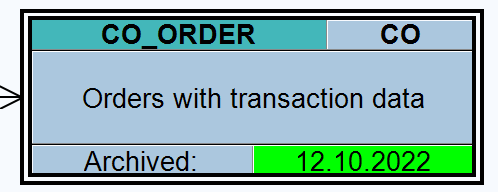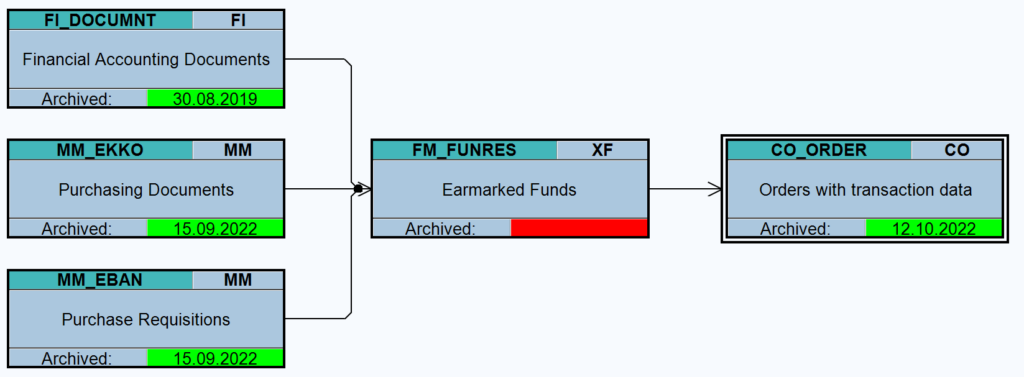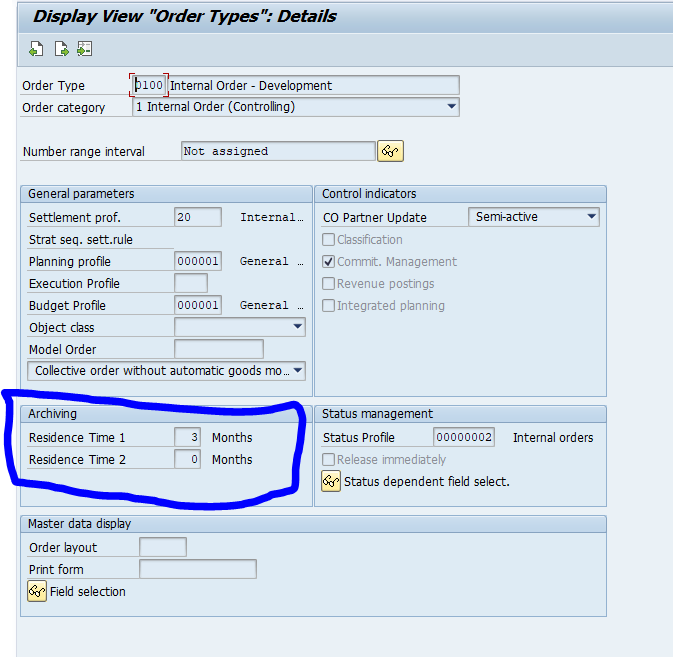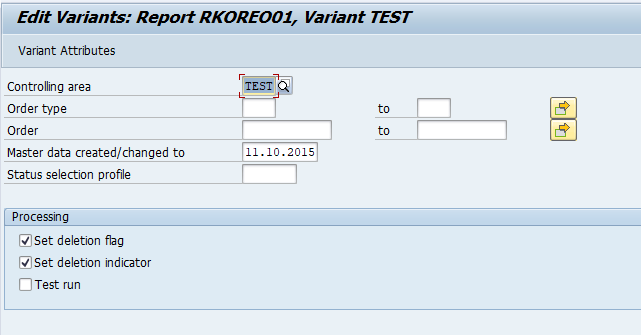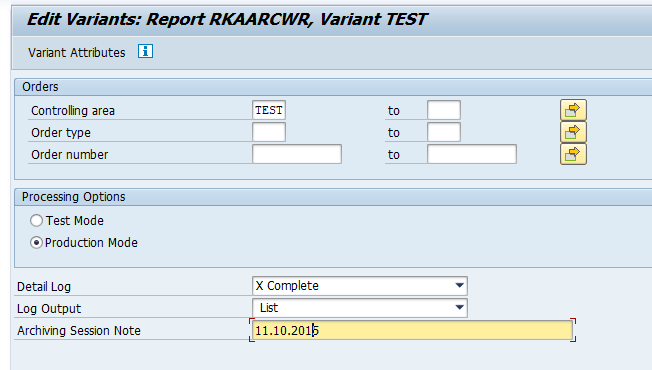This blog will explain how to archive CO Order data via object CO_ORDER. Generic technical setup must have been executed already, and is explained in this blog.
Object CO_ORDER
Go to transaction SARA and select object CO_ORDER.
Dependency schedule:
This means you must first archive relevant purchase requisitions, purchaser orders and financial documents relating to the CO order..
Tables that are archived:
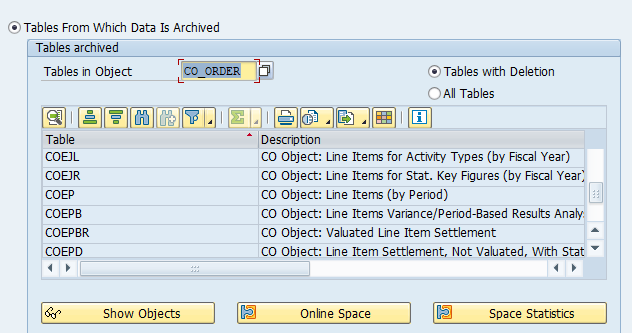
Most important:
- COEP: CO line items
Technical programs and OSS notes
Pre-processing program: RKOREO01
Write program: RKAARCWR
Delete program: RKAARCD1
Read program: RKAARCS1
Relevant OSS notes:
Application specific customizing
In the application specific customizing for CO_ORDER you have to set two retention periods per CO order type:
Residence time 1 determines the time interval (in calendar months) that must elapse between setting the delete flag (step 1) and setting the deletion indicator (step 2).
Residence time 2 determines the time (in calendar months) that must elapse between setting the deletion indicator (step 2) and reorganizing the object (step 3).
Executing the pre-processing run
The pre-processing run will set the deletion indicator for the CO Orders:
The output is a list of orders that are processed, and if not processed, the reason of blocking is written down.
Executing the write run and delete run
In transaction SARA, CO_ORDER select the write run:
Select your data, save the variant and start the archiving write run.
Give the archive session a good name that describes date range. This is needed for data retrieval later on.
After the write run is done, check the logs. CO_ORDER archiving has average speed, but high percentage of archiving (up to 100%). Reason is that all filtering and checking is already done by the pre-processing program.
Deletion run is standard by selecting the archive file and starting the deletion run.
Data retrieval
Start the data retrieval program and fill selection criteria:
Result is a list. From the list double click on the order. You can see the order now in normal GUI layout.
